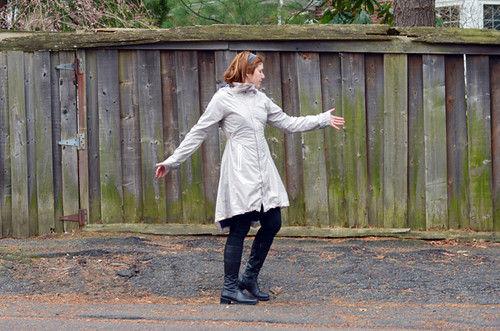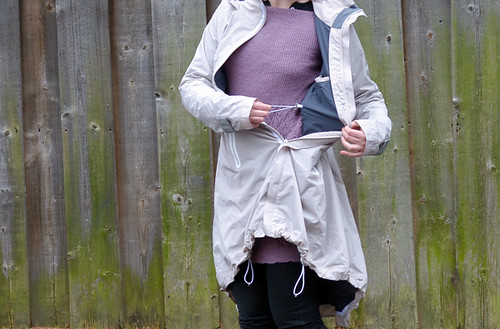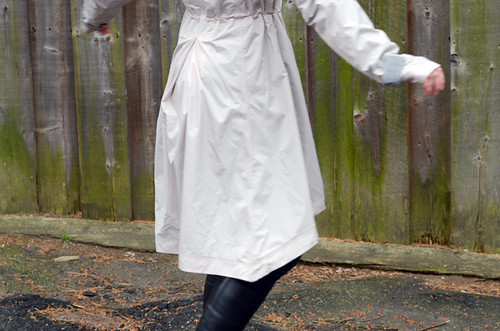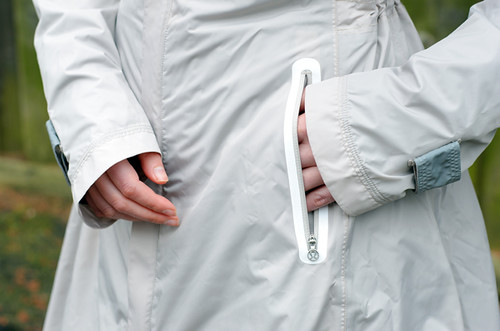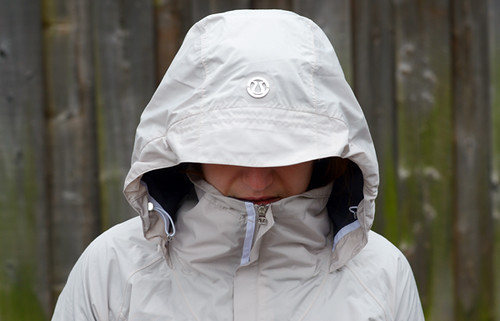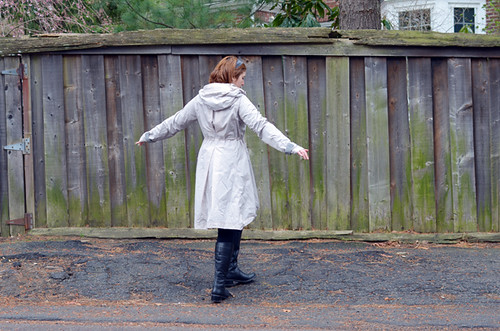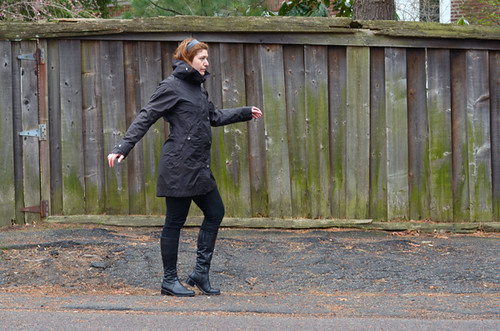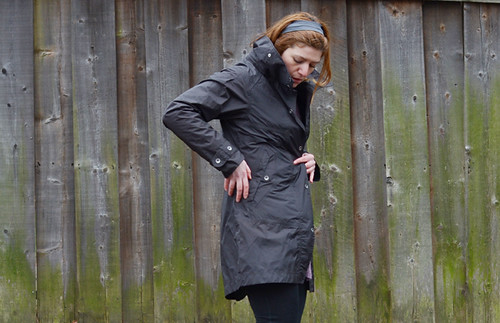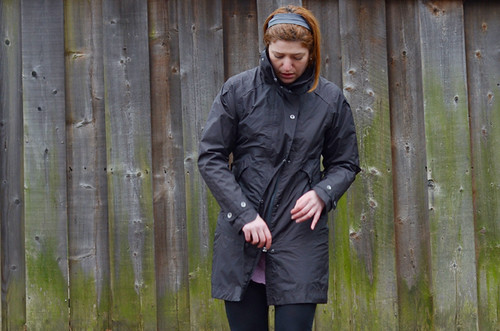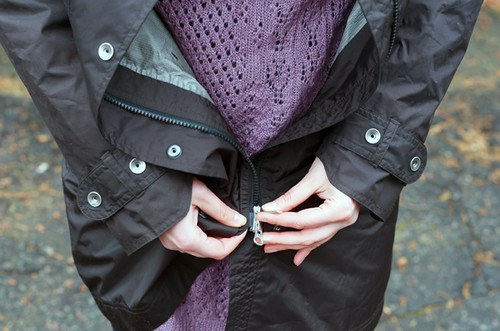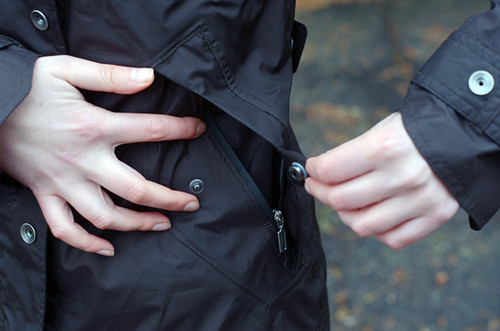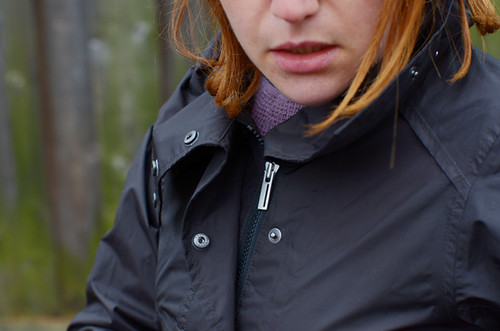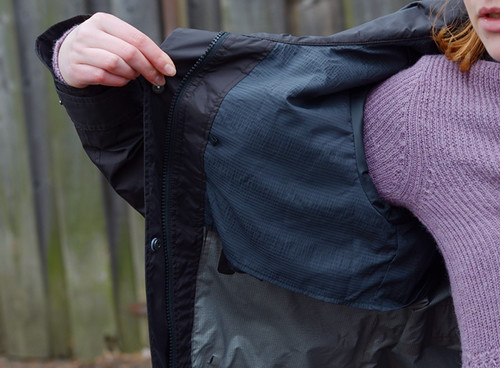
(Photo: A free soloist-- obviously not me!-- on the famous white billboard face of CCK in August .)
One year ago in mid-March I was more fit than I'd been in a long time. But I was still tentative on the rock as the year began. I remember stumbling my way up Te Dum (5.7) for my first climb of the season, with the rock and the gear both feeling mysterious to me after the long, snowy winter.
I hoped this year would be different. I'd grown so much as a climber over the course of . And this year we didn't really have much of a winter. There was no huge layoff between climbing days.
I was encouraged about my prospects when I got out to climb on February 1. On that day I felt fine, romping up several moderates on what might turn out to be my last day in the Gunks with Adrian. (In an act of unspeakable betrayal he moved back to Vancouver at the end of February.)
I didn't push any limits that day but the rock felt good, the gear familiar. Was it possible that maybe I could begin this season where I left off last year, and not regress several grades?
I got the chance to find out for sure on Saturday, March 17, when I went climbing in the Gunks with Dana Bartlett.
Dana and I had never met in person before, but we had corresponded by email. I was already familiar with him from his regular contributions to gunks.com and mountainproject.com. I knew him to be a strong climber of long experience. I hoped we'd have a good time together and that I might learn a thing or two.
I was feeling good on Saturday morning, having climbed a bit the day before. It had been a crummy day on Friday, starting with rain, then fog and wet rock, finally drying out and becoming nice in the late afternoon. I was out with my friend Franz, who has climbed inside for years but who has almost no outdoor experience. Because the weather was so poor we mostly toproped in the Uberfall, but despite the very limited nature of our climbing day I still took some confidence from the fact that I felt so natural on the routes we did. My footwork was solid; I was climbing well.
I decided I should just pick a landmark climb and go for it on Saturday with Dana. I quickly settled on CCK Direct, one of the ultraclassic three-star 5.9 climbs I never got around to in .
When I proposed it to Dana in the parking lot he was enthusiastic, saying that from what he knew about my recent climbing history, I'd be fine on it. This was just the kind of encouragement I needed! We gathered up our stuff and headed off down the carriage road.
We set up at the base of Erect Direction (pitch one is 5.8) and I led upward. I thought back to , when I'd had one of my best-ever days at the Gunks with Liz, onsighting both the regular non-direct CCK (5.7+) and Bonnie's Roof (5.9). I'd begun that day too with Erect Direction, figuring it was good to start with a 5.8-- an easier warm-up would inevitably still feel difficult and might only lead me to question myself. When Erect Direction went well that day in it had set the stage for further success and I hoped it would do the same for me again on Saturday.
I think of the first pitch of Erect Direction as a solid 5.8. It doesn't have any particularly hard moves on it but it is steep and continuous. It has many thoughtful sections and is quite pumpy for a good two-thirds of the way to the GT Ledge. It is to my mind a slightly easier version of the classic 5.8 testpiece Double Crack. It is a high quality pitch, a destination in its own right with good pro despite a few loose blocks.
It went down like butter on Saturday, making me even more primed for CCK Direct.

(Photo: The one and only Dana Bartlett, topping out on the 5.8 pitch one of Erect Direction.)
There was no need to consult the guidebook about CCK Direct. It seemed clear to me where to go. The opening overhang, which Dick rates as 5.8 PG/R, was my main concern. The last thing I wanted to do was to start the day by going splat on the GT Ledge. I'd followed Adrian up this part of the route in , however, and I thought the moves were pretty straightforward. (On that occasion Adrian had finished on the standard 5.7+ CCK, so I hadn't previewed any more of the Direct version.) The pro was a little bit down and to the left as you pulled the first roof, but it wasn't that bad, I thought.
Before setting off I asked Dana if he had any advice, and he said that I should save my blue # 3 Camalot for the end of the pitch, and that I'd be really happy to have it at the final crux overhang. This turned out to be very helpful information!
I was ready. I had the clever idea of leading up to the horizontal beneath the first overhang, placing a cam immediately to protect me while I leaned over, and then putting in another cam as far over to the right as I could reach. Then I back-cleaned the first cam and stepped down to move across to the actual moves.
This worked out well, but I probably should have put in two pieces when I leaned over instead of one. I later regretted having only a single piece between myself and the anchor when I did the first crux.
In any event I made it through the first overhang with no issues and breathed a sigh of relief.
I messed up heading into crux number two, the overhangs below the white billboard-like CCK face. I headed up a little too far to the left. I reached the bottom of the billboard, looked up and saw no holds, then looked to the right and saw all the chalk I'd neglected to follow. This caused me to panic for just a second.
I was getting pumped and there was no time to waste. I quickly downclimbed to my last cam, regrouped and headed back up the correct way. I'm sure this part of the pitch is really 5.7 or 5.8, but I made it harder for myself with my route-finding mistake. Luckily, once I pulled over the overhangs and found myself standing beneath the famous CCK crack, I could relax, clip a fixed tricam and shake it all out.
And then I had to shift gears from the jug-hauling overhangs to the exposed off-vertical thin climbing required by the CCK face. A few beautiful moves later, I was at the top of the crack, where one grunty pull got me above the billboard and below the huge roof at the top of the cliff.
The final challenge was still to come. To my surprise it turned out to be more mental than physical. It is so comfortable in that little alcove beneath the overhang, and the hold that takes you left to the exit notch is so small, you don't want to move! You can see a jug out further left and up, but it appears you have to step down and out left to get there. As you test the little hold over and over again, considering the move, it seems like you are taking a leap into the abyss. The footholds disappear. The exposure is insane.
I must have tested the hold a dozen times. I considered any alternative I could think of. There is chalk on some tiny horizontal cracks above, but I couldn't use them. Eventually I had to take the leap, step down and over, and trust I'd find whatever I needed when I got out there.
I needn't have been so worried. The pro was good. Once I finally made the step, I had the jug in a second. One more move up and I could slam in my blue Camalot. (Thank you Dana!) And then the biggest move of the pitch took me over the final overhanging block to the top.
What a way to start the season! I think CCK Direct may be the best pitch I have ever climbed. The good stuff just keeps coming and coming. After the steepness of two overhangs you have to deal with a totally new challenge, the thin sequence to get established in the perfect crack up that blank CCK face. The moves and the position are sublime. But it isn't over! The final crux notch puts the cherry on the cake.
Last fall I would have viewed this pitch as a fitting capper for the whole year. I'm so psyched to begin the season with such a great milestone.
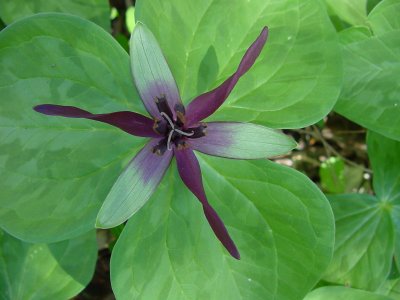
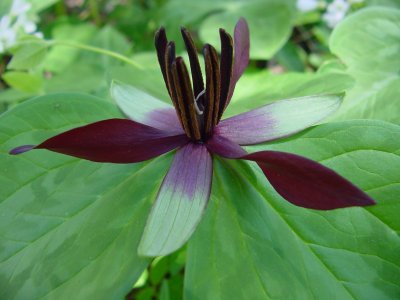
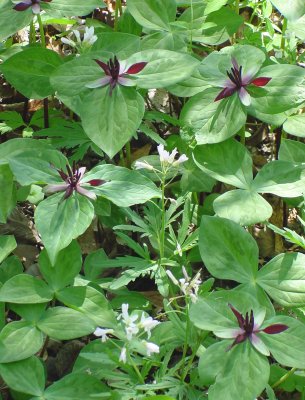
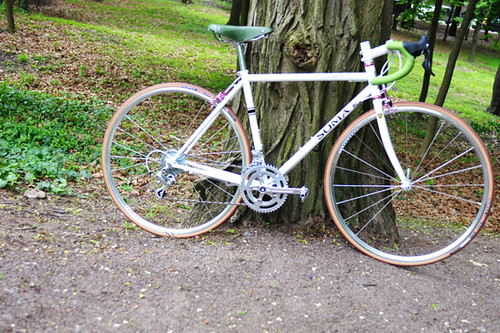

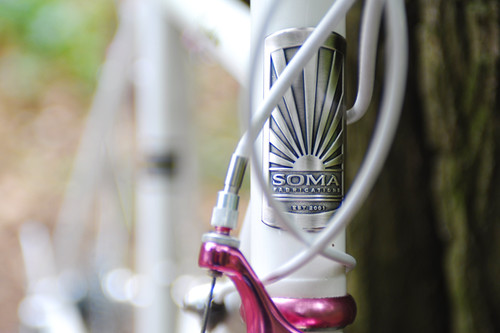
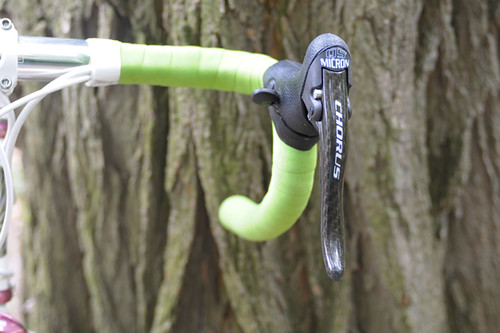



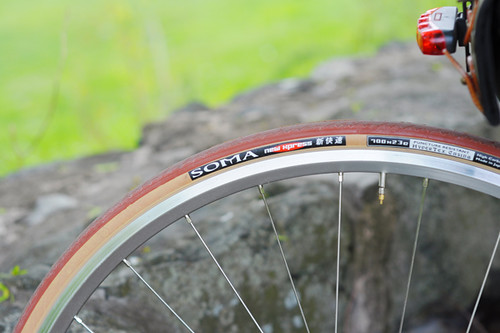


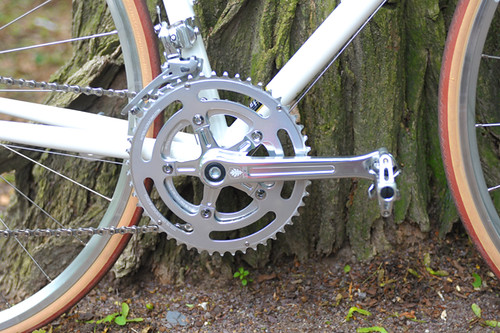










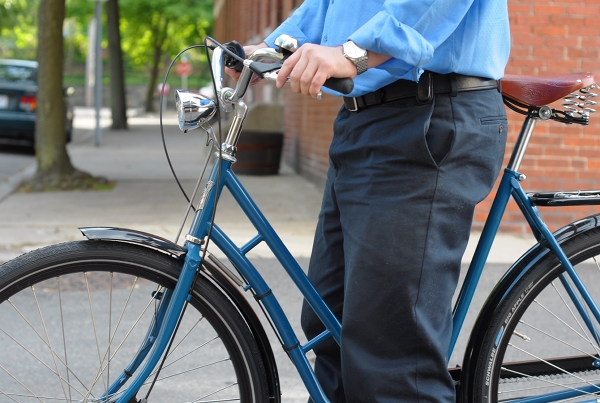 Since the Pilen give-away contest is happening before a final review will be published, I wanted to write up a separate post about its ride quality. It's funny that even though I should know better, I am still fooled into thinking that I "know" a bike based on the way it looks, and this was the case here. "A swan frame," I thought, "this will be just like my Austrian bike." But the Pilen is a completely different bicycle. Moreover, my impression of its ride quality differs from others' impressions, which apparently may be a factor of my size. But let me start from the beginning.
Since the Pilen give-away contest is happening before a final review will be published, I wanted to write up a separate post about its ride quality. It's funny that even though I should know better, I am still fooled into thinking that I "know" a bike based on the way it looks, and this was the case here. "A swan frame," I thought, "this will be just like my Austrian bike." But the Pilen is a completely different bicycle. Moreover, my impression of its ride quality differs from others' impressions, which apparently may be a factor of my size. But let me start from the beginning. As described before, the bicycle is a 56/58cm frame with 700Cx50mm tires, which makes it a pretty large bicycle for a person my size. Since I am barely tall enough to ride it, I have the saddle almost all the way down. I also lowered the handlebars as much as I could. The bars are flared out quite a bit - almost placing the hands in a mountain bike style position - and having them set high felt unnatural. In the position shown, the saddle and handlebars feel more or less fine, though personally I prefer bars that are more swept back.
As described before, the bicycle is a 56/58cm frame with 700Cx50mm tires, which makes it a pretty large bicycle for a person my size. Since I am barely tall enough to ride it, I have the saddle almost all the way down. I also lowered the handlebars as much as I could. The bars are flared out quite a bit - almost placing the hands in a mountain bike style position - and having them set high felt unnatural. In the position shown, the saddle and handlebars feel more or less fine, though personally I prefer bars that are more swept back.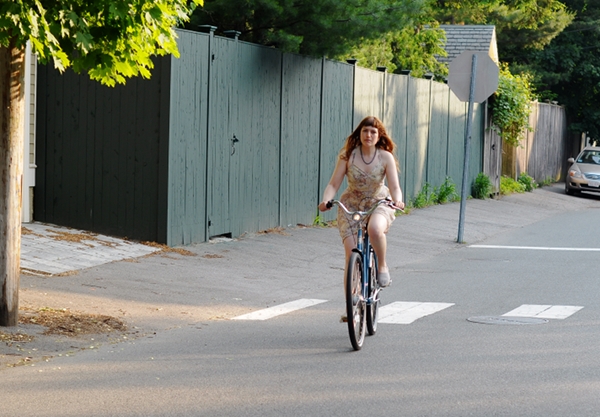 The surprising downside for me when riding the Pilen, is my experience with speed and acceleration. I am finding this hard to put into words, but let me try: When I attempt to ride the bike at the speed I am accustomed to, it is as if I feel a resistance. I have to push harder in order to keep it going fast, and this puts a strain on my legs. My first thought was that the gearing must be too high, because it feels better to start it in 1st gear, whereas on my other 3-speeds I am fine starting in 2nd. However, as soon as I accelerate, not only do I quickly find it necessary to switch into 2nd, then 3rd gear, but I also soon begin to max out the 3rd gear. This makes no sense, because the Shimanohub used on the Pilenis not spaced any closer than the 3-speed hubs I use on my other bikes; I should not be running out of gears. Even more odd is that I feel the strain in my legs regardless of what gear I am in and how fast I am going. According to the Co-Habitant's computer, I did manage to get the Pilenup to 17mph. But this was more effortful than on my other upright 3-speed bikes.
The surprising downside for me when riding the Pilen, is my experience with speed and acceleration. I am finding this hard to put into words, but let me try: When I attempt to ride the bike at the speed I am accustomed to, it is as if I feel a resistance. I have to push harder in order to keep it going fast, and this puts a strain on my legs. My first thought was that the gearing must be too high, because it feels better to start it in 1st gear, whereas on my other 3-speeds I am fine starting in 2nd. However, as soon as I accelerate, not only do I quickly find it necessary to switch into 2nd, then 3rd gear, but I also soon begin to max out the 3rd gear. This makes no sense, because the Shimanohub used on the Pilenis not spaced any closer than the 3-speed hubs I use on my other bikes; I should not be running out of gears. Even more odd is that I feel the strain in my legs regardless of what gear I am in and how fast I am going. According to the Co-Habitant's computer, I did manage to get the Pilenup to 17mph. But this was more effortful than on my other upright 3-speed bikes. Now I was seriously intrigued. I asked the Co-Habitant to ride the Pilen. He is just over 6' tall and weighs over 200lb. He raised the saddle and took the bike for a spin. He loved it and wanted to keep riding it. He thought it was nimble and a bit faster than his Pashley Roadster. He loved the cushy tires. He could not relate to my feedback at all and did not sense anything odd about the gearing.
Now I was seriously intrigued. I asked the Co-Habitant to ride the Pilen. He is just over 6' tall and weighs over 200lb. He raised the saddle and took the bike for a spin. He loved it and wanted to keep riding it. He thought it was nimble and a bit faster than his Pashley Roadster. He loved the cushy tires. He could not relate to my feedback at all and did not sense anything odd about the gearing.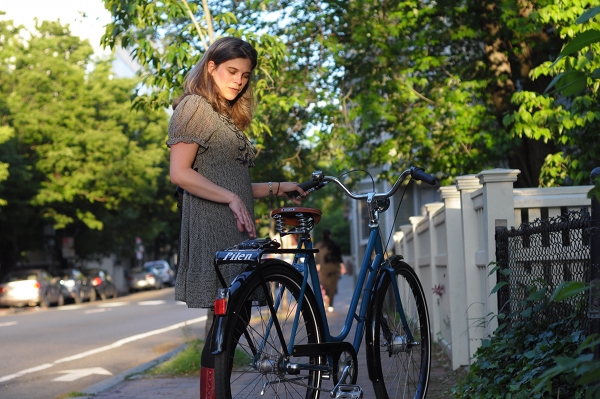 Next I took the Pilen over to "cycler," of Biking in Heels. She and I are roughly the same height and weight. She loved the looks of the bike(as do I), but found the ride quality odd. Without my having said anything in advance, she had similar things to say about the gearing feeling too closely spaced as I have expressed above. She also found the "cockpit" configuration to feel unnatural compared to her own upright bikes (a Raleigh Sports and several DL-1s).
Next I took the Pilen over to "cycler," of Biking in Heels. She and I are roughly the same height and weight. She loved the looks of the bike(as do I), but found the ride quality odd. Without my having said anything in advance, she had similar things to say about the gearing feeling too closely spaced as I have expressed above. She also found the "cockpit" configuration to feel unnatural compared to her own upright bikes (a Raleigh Sports and several DL-1s).


